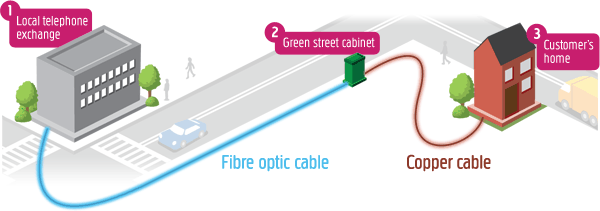- Related articles
- Optical Transceivers for Cisco SLM2024T-UK Switch
- Bi-Directional QSFP — 40GbE Over LC Duplex Multimode Fiber
- Optical Transceivers for Cisco N3K-C3172PQ-10GE Switch
- The Cisco Compatible GlC-T SFP From Cozlink
- Optical Transceivers for Cisco WS-C3650-48FWD-S Switch
- All Cisco MA-SFP-10GB-SR's information (List price, Specs, Datasheet PDF, Compatibility ma
- Optical Transceivers for Cisco N3K-C3524P-10G Switch
- Optical Transceivers for Cisco ESW-520-48P-K9 Switch
- Apply to 40GBASE-LR4 Standard Optical Transceiver Models
- Optical Transceivers for Cisco WS-C2975GS-96PS-LM Switch

Introduction
According to the professional technicians, there are some fiber optic cables used to transmit data over a long distance while others are made to transmit data over a short distance. One of the fiber optic cables used in the transmission of data over a short distance is known as multimode fiber. A lot happens inside multimode fiber during the transmission process.

What’s Happening inside the Multimode Fiber
1. Step-Index Multimode Fiber
Due to its large core, some of the light rays that make up the digital pulse may travel a direct route, whereas others zigzag as they bounce off the cladding. These alternate paths cause the different groups of light rays, referred to as modes, to arrive separately at the receiving point. The pulse, an aggregate of different modes, begins to spread out, losing its well-defined shape. The need to leave spacing between pulses to prevent overlapping limits the amount of information that can be sent. This type of fiber is best suited for transmission over short distances.
2. Graded-Index Multimode Fiber
Contains a core in which the refractive index diminishes gradually from the center axis out toward the cladding. The higher refractive index at the center makes the light rays moving down the axis advance more slowly than those near the cladding. Due to the graded index, light in the core curves helically rather than zigzag off the cladding, reducing its travel distance. The shortened path and the higher speed allow light at the periphery to arrive at a receiver at about the same time as the slow but straight rays in the core axis. The result: digital pulse suffers less dispersion. This type of fiber is best suited for local-area networks.
Fiber Optics is sending signals down hair-thin strands of glass or plastic fiber. The light is “guided” down the center of the fiber called the “core”. The core is surrounded by an optical material called the “cladding” that traps the light in the core using an optical technique called “total internal reflection.”
The core and cladding are usually made of ultra-pure glass. The fiber is coated with a protective plastic covering called the “primary buffer coating” that protects it from moisture and other damage. More protection is provided by the “cable” which has the fibers and strength members inside an outer covering called a “jacket”.
Conclusion
Due to its numerous strands, the multimode fiber is the best suited to transmit data over the short distance. For the pulse of light to move along the cable, a principle of total internal reflection applies.





































































